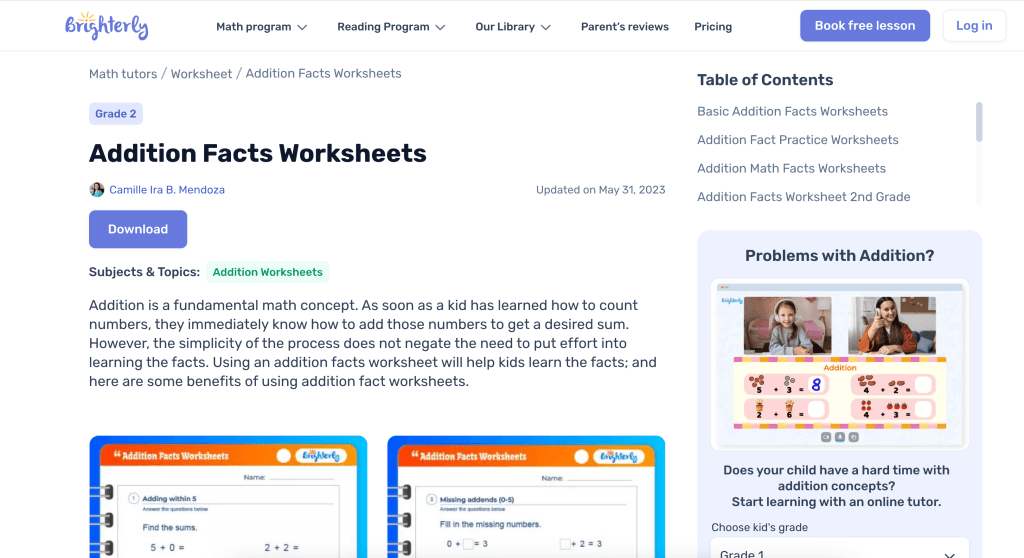Addition Facts for Kids: All You Need to Know
reviewed by Jo-ann Caballes
Updated on September 9, 2025
The most important math skill? Addition! It’s the very first step kids take, and a strong grasp of it sets the stage for success in all future math topics. As a teacher, I’ve put together this article with practical ways to help your child master addition facts at home.
Key points
- The first steps in math – starting with addition and mastering the addition table – form the foundation that can influence a child’s future success in the subject.
- Practice through flashcards, everyday games, mobile apps, and engaging learning blocks makes learning more effective and fun.
- Daily repetition combined with simple systems (and even interesting facts about addition) is the key to building strong skills and achieving lasting results.
- Personalized programs like Brighterly make learning effective and give children professional support from experienced tutors.
What are the best ways to learn addition facts?
Note: Addition can be fun! Interactive games, quizzes, and colorful books make practice playful, while fact family charts help kids spot patterns and remember naturally. Pairing this with one-on-one tutoring gives children solid skills and confidence, and just 10-15 minutes of daily practice helps make their learning stick.
Learn addition facts with math tutors
I really think a math tutor is one of the best ways to support your child. A good teacher lays a strong foundation from day one, helping your child feel capable and secure in their skills. When kids start to feel confident early on, they’re more likely to enjoy math and explore new concepts as they grow. In a busy classroom, it’s hard for teachers to give every student full attention. Private tutoring focuses entirely on your child. A skilled tutor can quickly spot where they’re struggling and help them move past challenges without frustration, guiding them in memorizing addition facts efficiently.
From my experience, the right tutor makes all the difference. I can sincerely recommend the Brighterly reading and math tutoring platform, which makes learning math effective, engaging, and fun for kids.
And this is why it works. Brighterly elementary math tutors use leading teaching techniques to help your kids learn addition math facts. They start with the basics, specifically four basic operations: addition, subtraction, multiplication, and division. Using strategies such as number bonds, visual aids like ten frames, and interactive games, tutors help your child ease into the world of basic addition facts that are fun and engaging.
Note: Brighterly is an online platform where tutors help students in grades 1-9 truly understand and enjoy math. Every tutor is certified and carefully chosen. That means your child is learning from experienced professionals.
Why parents prefer Brighterly tutors for their kids
Personalized learning
Each child is different, and Brighterly tutors get that. They tailor the math program to your child’s needs, strengths, and areas of improvement. Before starting, every student takes a quick placement test so the tutor knows exactly where to focus.
Interactive one-on-one lessons
Learning here is anything but boring! Each math class includes fun addition fact games, animations, and presentations. And it’s just your child and the teacher on a video call – no distractions, no waiting for attention.
Common Core-aligned topics
Everything matches the US school curriculum. Your children don’t just practice math – they actually level up their school knowledge while learning with a tutor.
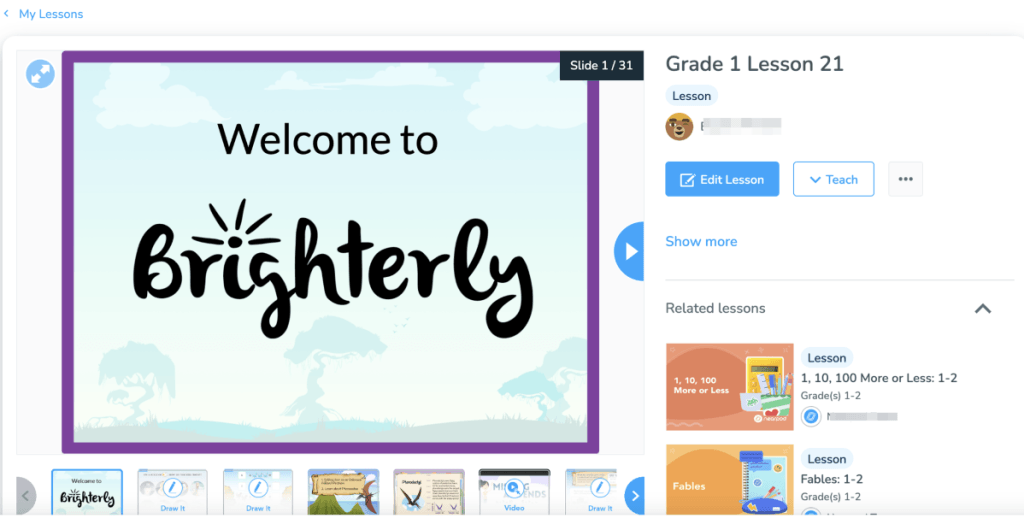
Practice addition facts with worksheets
Nothing helps a child learn a new topic better than practice – over and over again. Math worksheets are a great way to reinforce what they’ve learned. Today, these worksheets often include colorful pictures, charts, and tables, making the exercises really engaging. They help organize information in a child’s mind and, as a bonus, prepare them for independent work, future tests, and allow them to progress at their own pace. For this purpose, free Repeated Addition Worksheets are available, so be sure to use them!
By the way, Brighterly provides free printable math worksheets that contain hundreds of useful materials for learning and addition facts practice. These addition worksheets are available even if you decide not to subscribe to the platform. Detailed explanations, engaging visuals, and step-by-step solutions help your child understand the concepts and practice effectively.
Also, everything you need to know about addition facts worksheets are in PDF, so you can print them out when you’re ready to work. Furthermore, Brighterly Knowledge Base offers you articles on addition, number sense, measurement, money, times tables, word problems, and more, covering every math topic your child needs.
Get better at addition math facts with math tests
Why does your child need math tests? Effective learning starts with knowing where your child stands. What do they find easy, and where do they struggle? The answers give a clear plan for what to focus on next.
Brighterly includes addition math facts practice tests at every step, so your child can practice anytime. Plus, free diagnostic online math tests kick off the best possible start for their learning journey.
Addition facts table: A step-by-step guide for kids
What is the basic addition fact?
A basic addition fact is a simple calculation showing how two numbers combine. As a math teacher, I can tell you this: without mastering basic addition facts, kids often struggle later with subtraction and larger number problems. Why? Instead of focusing on new concepts, they get stuck on simple calculations, often missing important steps in each task. This slows their progress and can even make them lose interest in math.
Think of the addition facts table as a puzzle piece that unlocks easy counting. It covers examples from 1+1 up to 9+9. While they may look simple, these facts form the foundation of arithmetic. Using this table, children can recognize patterns, memorize facts naturally, and build the confidence they’ll need for more complex math tasks.
How to use the addition facts table?
Using the math addition facts table, start by practicing just a few rows or columns, beginning with adding 1, until your child feels confident. Then gradually move through the table, adding a few new facts at a time. Short daily sessions (10–15 minutes) with games or flashcards make practice engaging.
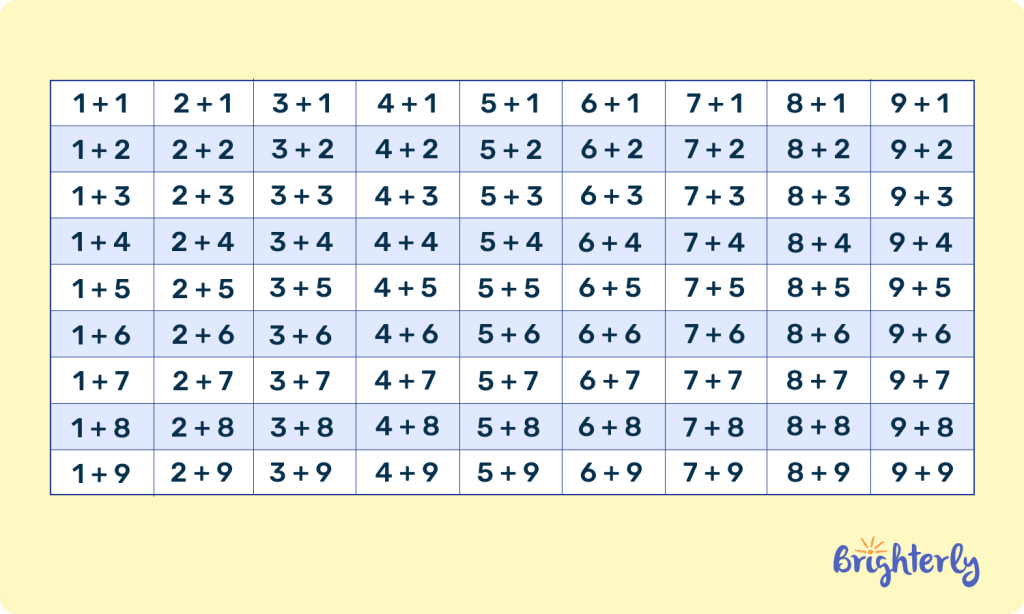
How to memorize addition facts
- Use visual aids
- Practice with flashcards
- Group facts into families
- Incorporate games
- Use repetition and daily practice
Note: Learning the addition facts table isn’t easy for a 6-year-old, but it doesn’t have to be stressful. Take it step by step: review what’s familiar, add a few new facts, and help your child master them over time. And don’t forget to reward their progress – it keeps math positive and fun.
Use visual aids to practice math facts addition
Here’s an interesting fact: about 80% of students in the US consider themselves visual learners – meaning they remember information better when they see it. That’s a high chance that your child is one of them! That’s why it’s important to use colorful learning tools, animal magnets, counting sticks, or any items that visualize addition. Even everyday objects such as buttons, coins, or cookies can turn into teaching tools. Get creative!
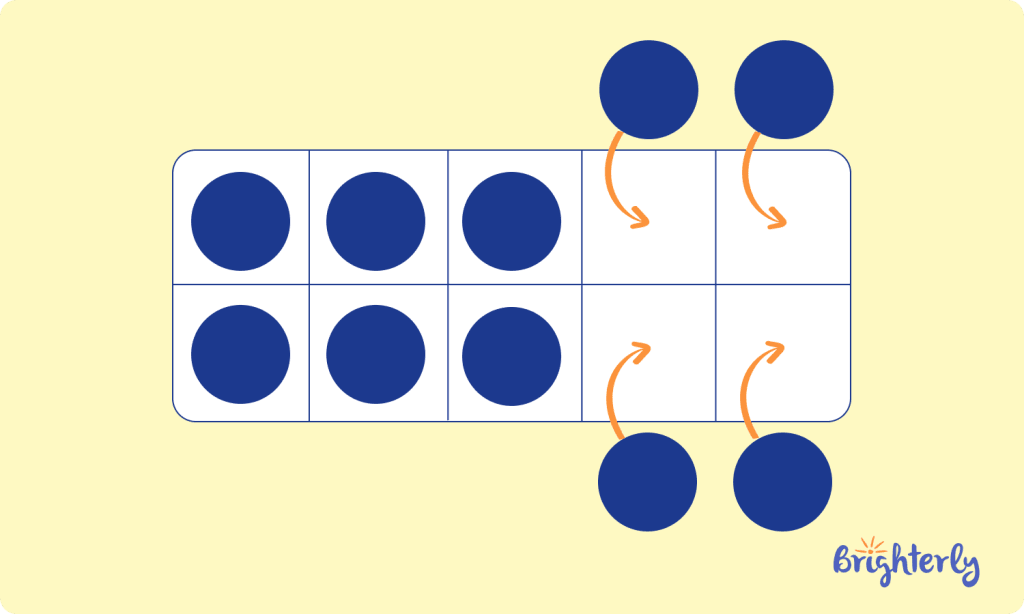
Addition fact practice with flashcards
A popular way to practice addition is with flashcards. Imagine this: the math problem is on one side, and the answer is on the other for self-checking. The child goes card by card, memorizing examples. What I love about such a method is how easy it is to review. You can even add a playful twist, like counting correct answers or timing each round.
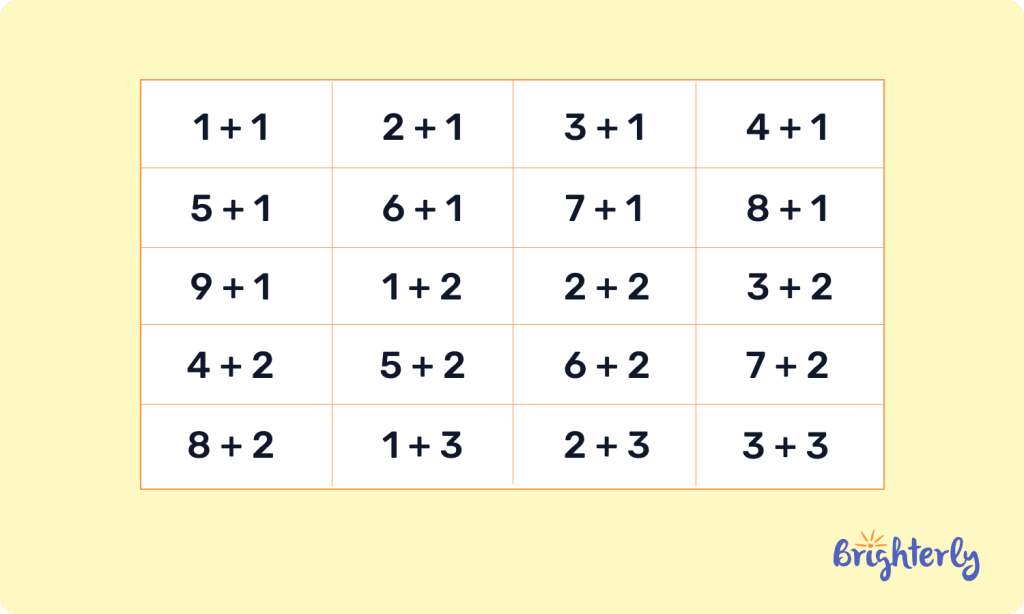
Group facts into families for effective addition math facts practice
The next method is called “families of facts.” The idea is simple: instead of memorizing each addition problem separately, kids learn to see patterns between numbers. For example, if you know 3 + 4 = 7, then 4 + 3 = 7, and the related subtraction facts (7 – 3 = 4, 7 – 4 = 3) become easier. This method helps kids understand patterns, not just memorize by heart, making other arithmetic tasks much easier later on.
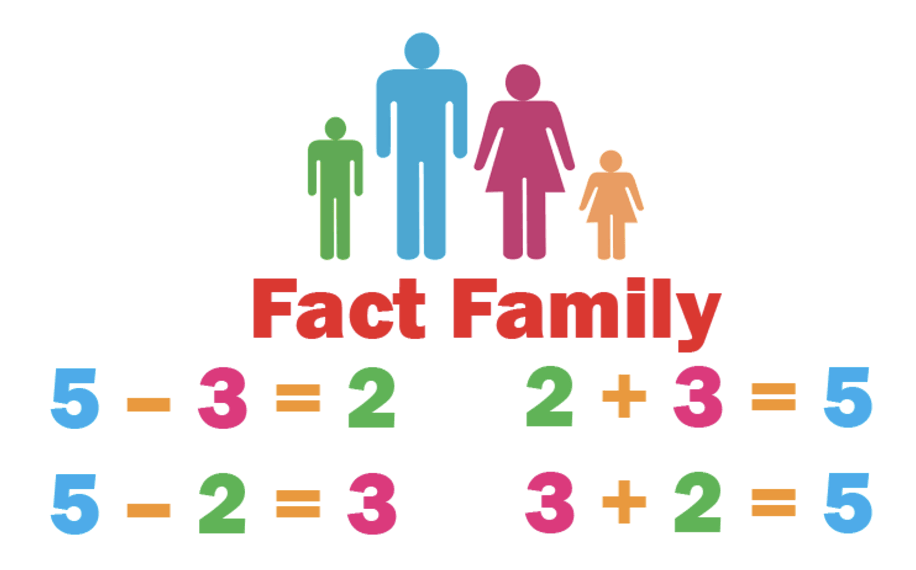
Incorporate games for addition math facts practice
Mix learning with real games! There are plenty of card and board games that make practicing addition fun. Even a simple dice works – roll it and add the numbers. Or try a phone app for addition fact practice online, where your child spends 15 minutes learning math with, say, a funny monster who teaches them all about numbers.
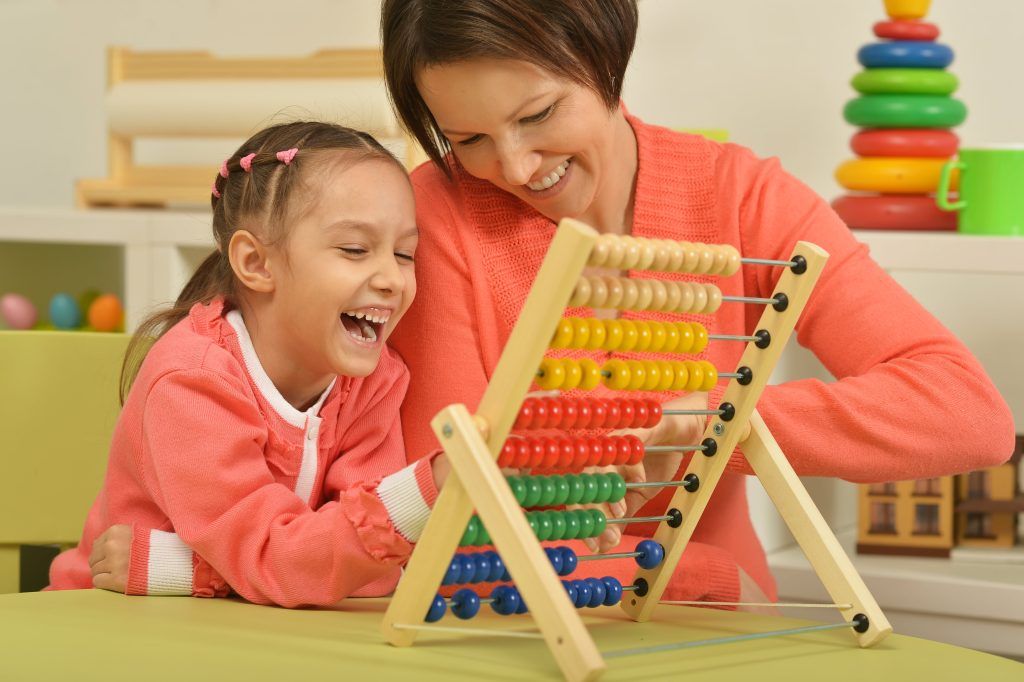
Use repetition and daily practice to memorize facts about addition
As I said before, the key to learning is regular practice and review. Try to go over topics with your child every day – just 1-2 short exercises can make a big difference. You can also do mini-quizzes to spot which problems are tricky, and then tackle them together. Celebrate their progress along the way, helping your child enjoy the subject even more!
What are the important facts of addition?
When you start teaching your child math, begin with the basics. Addition is one of the four main arithmetic operations, along with subtraction, multiplication, and division. It is represented by the + symbol, which shows we’re combining numbers.
The first examples to introduce are the simple “doubles,” like 1+1=2, 2+2=4, or 3+3=6. These are easy for kids to understand and help them see how numbers grow. You can also show addition fast facts – quick, simple sums that your child can memorize to build confidence early on. Then, show them how adding zero works – for example, 5+0=5 – to help them understand that sometimes numbers don’t change the result.
It’s also helpful to show that addition isn’t limited to just two numbers. Encourage your child to write addition facts, like 2+4+6=12, to see how numbers can come together in different ways. This prepares them for more advanced math later.
Remember: These small steps might seem simple, but they are the foundation for everything else in math. If your child masters them with confidence, they’ll be ready to take on other math challenges.
What are addition facts to 10?
Addition facts to 10 are the first milestone – children should be able to solve them easily, like 2+1, 3+6, or 5+5, as naturally as cracking sunflower seeds.
It’s important to quickly introduce the patterns in math. For example, 3+4 is the same as 4+3 – just a different order, but still equals 7. If you notice your child can recognize this right away, that’s a wonderful sign. At this point, it’s also helpful to show the connection with subtraction: 7–3=4 and 7–4=3. This helps them start building their very first link between addition and subtraction.
If your child can handle these exercises with ease, congratulations! They’ve already built a strong foundation. But the journey doesn’t stop here – there’s so much more to discover!
What are addition facts to 20?
Addition facts up to 20 are facts that use numbers from 0 to 20 and add up to 20 or less. For example, 10 + 10 is an addition fact to 20, as is 0 + 2. Knowing addition facts to 20 is vital for students in Grade 1 and Grade 2 because it helps them learn mental math techniques.
Addition doubles facts are additions of two similar digits of any existing number below 20. They serve as a base for adding numbers before learning the bigger ones. You can help to easily memorize them by using a mnemonic device, a simple way of remembering something new through a phrase or a story.
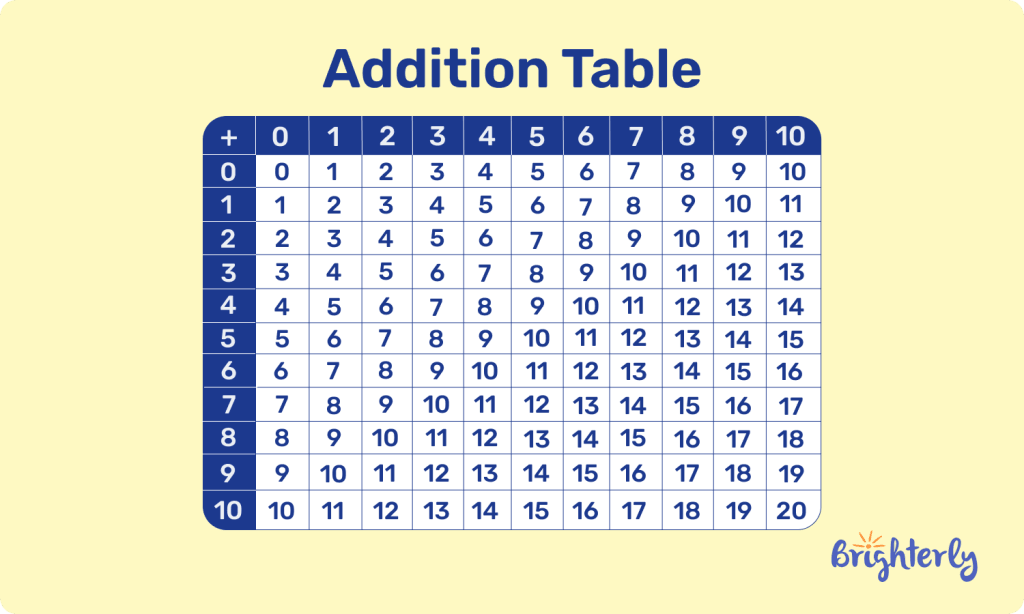
How do addition facts help you subtract?
Addition facts help with subtraction because they show the connection between numbers. If your child has practiced addition facts for grade 1 a lot, they’ll likely start noticing the connections between numbers. For example, if they know that 5 + 3 = 8, they can see that:
8 – 3 = 5
8 – 5 = 3
One operation helps explain the other: addition combines numbers, while subtraction separates them.
Even better, show subtraction in a hands-on way. Take a basket of apples or other treats – give your child, say, 6 apples, then take away 3. Let them count what’s left and see how subtraction works in real life.
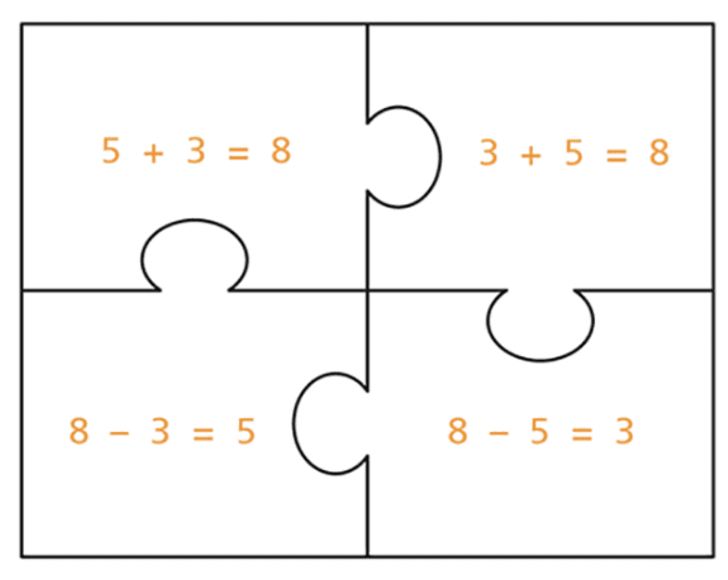
Conclusion
As a teacher, I can’t stress enough how early math knowledge can shape or even spark a love for this amazing subject. Math isn’t just about numbers in a notebook; it helps kids build logic and figure out all kinds of situations in real life. That’s why it’s worth putting in the effort to give your child a strong start. If you want to trust your little one to professionals who can teach them all about addition, Brighterly math experts are ready to help – book 1st free class and see the difference!


